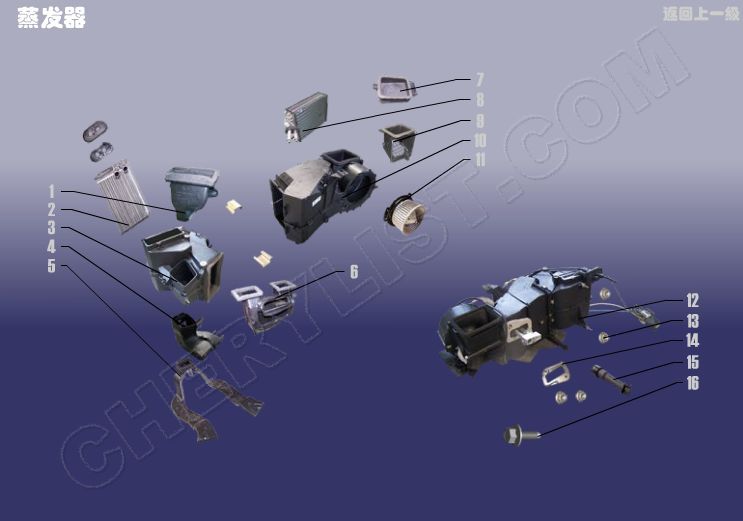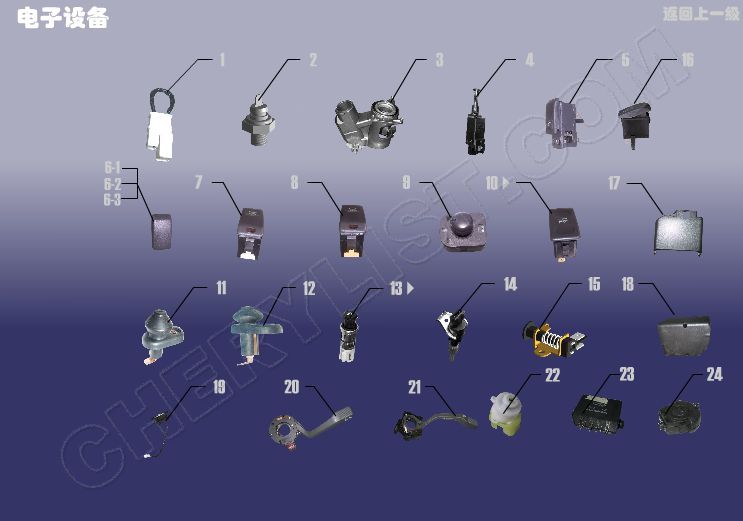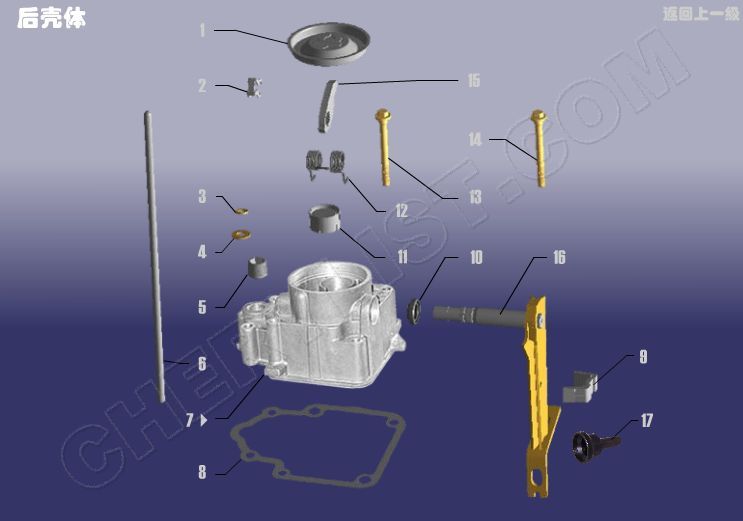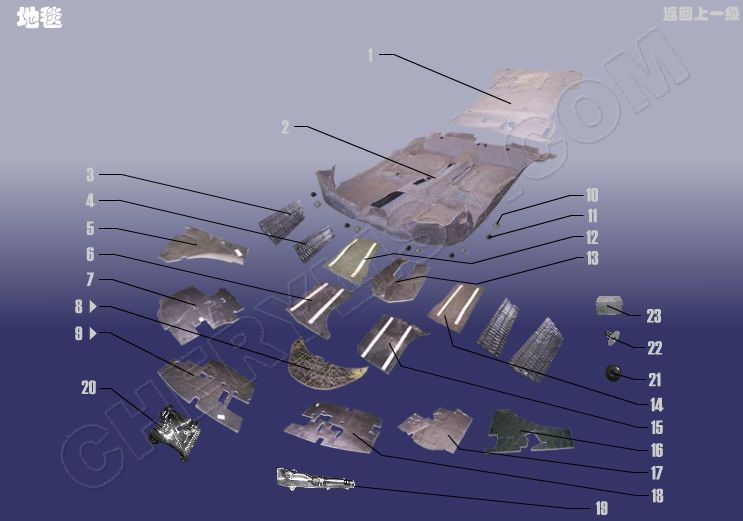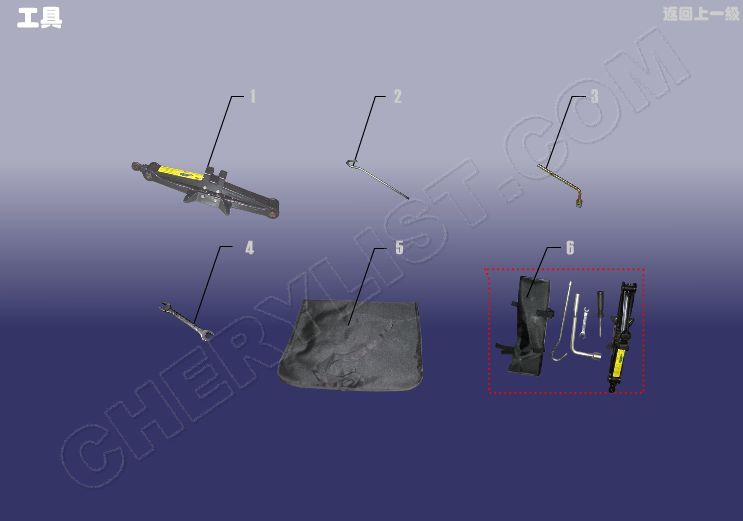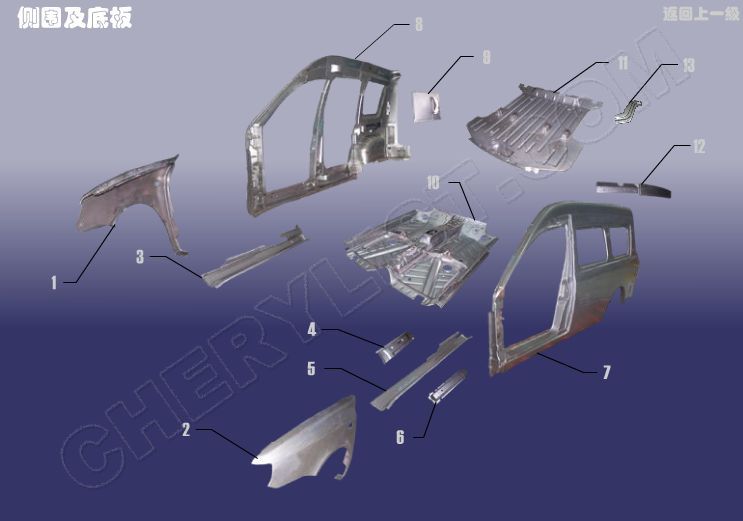AC SYSTEM EVAPORATOR for KARRY
1 A11-5305170 VENT -SINGLE
2 A11-8107023 CORE-RADIATOR
3 A11-8107017 HOUSING-EVAPORATOR
4 A11-8107045 WIND GRILLE -FOOT
5 A11-5305110 VENT ASSY-FOOT
6 A11-5305190 VENT -DOUBLE
7 A11-5300640 FILTRATE WIND INTAKE
8 A11-8107021 CORE-EVAPORATOR
9 A11-8107015 HOUSING -VENT WIND INTAKE
10 A11-8107019 HOUSING-EVAPORATOR
11 A18-8107027 FAN ASSY-GENERATOR
12 A18-8107010AL HVAC ASSY
13 A11-8107013 NUT-FIX EVAPORATOR
14 A11-8107011 GASKET
15 A11-8107025 PIPE-DRAIN
16 N90267201 BOLT
Automobile air conditioner is a kind of device on the automobile, which can cool, heat, ventilate and purify the air in our carriage. Because the automobile is a relatively closed space, the long-term lack of smooth air will make us feel tired, which is also a problem for drivers and can’t drive well, In serious cases, there will be some potential safety hazards, so now the air conditioning devices have become one of the symbols to measure whether the functions of the car are complete.
The layout of different types of air conditioning systems is different. At present, the integrated cooling and heating air conditioning system is widely used in cars. The arrangement type is to assemble the evaporator, warm air radiator, centrifugal blower and control mechanism together, which is called air conditioner assembly.
General composition and function of automobile air conditioning system
The air conditioning system is generally composed of the following five systems:
(1) Refrigeration system: cool or dehumidify the indoor air or the fresh air entering the vehicle from the outside, so as to make the indoor air cool and comfortable.
(2) Heating system: it is mainly used for heating, heating the air in the car or the fresh air entering the car from the outside, so as to achieve the purpose of heating and dehumidification.
(3) Ventilation system: the fresh air outside is sucked into the car room for ventilation and ventilation. At the same time, ventilation also plays a good role in preventing the windshield from fogging.
(4) Air purification system: remove the dust, odor, flue gas and toxic gas in the indoor air to make the indoor air clean.
(5) Control system: control the temperature and pressure of the refrigeration and heating system, and control the temperature, air volume and flow direction of the indoor air, so as to improve the normal operation of the air conditioning system.
Working principle of automobile air conditioner
1. Compression process: the compressor sucks the low-temperature and low-pressure refrigerant gas at the outlet of the evaporator, compresses it into high-temperature and high-pressure gas, and discharges it from the compressor.
4. Endothermic process: the mist refrigerant liquid enters the evaporator. At this time, the boiling point of the refrigerant is far lower than the temperature in the evaporator, so the refrigerant liquid evaporates into gas. In the evaporation process, a large amount of surrounding heat is absorbed, and then the ‘refrigerant vapor with low temperature and low pressure’ enters the compressor again. The above process is carried out repeatedly to reduce the air temperature around the evaporator.
1. Compression process: the compressor sucks the low-temperature and low-pressure refrigerant gas at the outlet of the evaporator, compresses it into high-temperature and high-pressure gas, and discharges it from the compressor.
4. Endothermic process: the mist refrigerant liquid enters the evaporator. At this time, the boiling point of the refrigerant is far lower than the temperature in the evaporator, so the refrigerant liquid evaporates into gas. In the evaporation process, a large amount of surrounding heat is absorbed, and then the refrigerant vapor with low temperature and low pressure enters the compressor again. The above process is carried out repeatedly to reduce the air temperature around the evaporator.
1. Compression process: the compressor sucks the low-temperature and low-pressure refrigerant gas at the outlet of the evaporator, compresses it into high-temperature and high-pressure gas, and discharges it from the compressor.
4. Endothermic process: the mist refrigerant liquid enters the evaporator. At this time, the boiling point of the refrigerant is far lower than the temperature in the evaporator, so the refrigerant liquid evaporates into gas. In the evaporation process, a large amount of surrounding heat is absorbed, and then the refrigerant vapor with low temperature and low pressure enters the compressor again. The above process is carried out repeatedly to reduce the air temperature around the evaporator.



